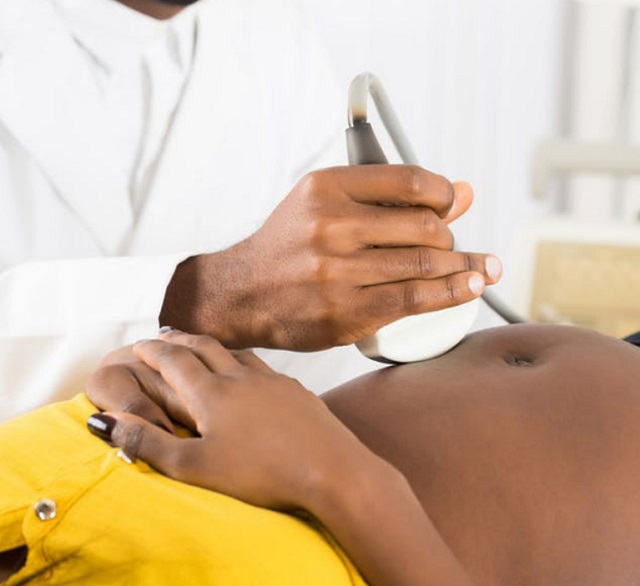
Uneasy progress for Uganda women and girls’ health as Demographic Health Survey records a remarkable improvement
COMMENT | JOY ASASIRA | As a women’s health and rights advocate, I could not hide my excitement when I learned that the maternal mortality ratio had declined from 336/100,000 live births in 2016 to 189/100,000 live births. This refreshing news emerged during the recent dissemination of preliminary data from the 7th edition of the Uganda Demographic Health Survey.
Since I started my activism for women’s health over a decade ago, Uganda has had a persistently high Maternal Mortality Ratio, one of the highest in the region. At that time, the MMR stood at 438/100,000 live births.
Pregnancy and childbirth complications have been one of the highest killers of women of reproductive age in Uganda. It was satirically described by the late Dr. Charles Kiggundu, a renowned OBGYN who succumbed to Covid-19 in 2020, marking a huge loss to the fight to address preventable maternal deaths in Uganda and the region.
By the time of his death, there is no day that the good doctor did not speak about women’s health without wondering why, in this day and age, 17 women die from preventable pregnancy-related causes. He vividly likened this toll to a full passenger service vehicle (taxi) filled with women being involved in a road accident daily, with no survivors. He mused further that, if these were men dying at this alarming rate, heaven and earth would have been moved to find a solution – he was a man after all, and must have known first hand the value attached to the lives of men compared to those of their female counterparts. It did not help that almost 95% of all maternal deaths occurred in low and lower middle-income countries in 2020 (WHO).
Without further information, I cannot authoritatively state which ones of the big five causes of preventable maternal mortality have been effectively addressed resulting in this remarkable improvement in maternal health in Uganda. They include; sepsis, high blood pressure, unsafe abortion, hemorrhage, and other indirect causes.
What is certain, though, is that the Ministry of Health and other key stakeholders including development partners and civil society organisations have worked tirelessly to address this issue. The MoH has rolled out a number of programs, developed an array of policies and guidelines to safe maternal service delivery. These include social behavior change programs, incentives and nudges.
The courts too have not been left out in these efforts. In the land mark decision by the Constitutional Court in Constitutional Petition No. 16 of 2010, the Honorable court recognised that the failure of the government to provide emergency obstetric care resulted in a violation of women’s right to life (Article 22), right to perform their unique maternal health function (Article 33) and right to health (Objective 8 A of the national objectives and state policy).
From the foregoing, one can conclude that the improvement in the state of maternal health is as result of a holistic, multi-sectoral, interdisciplinary and above all rights-based approach being adopted by relevant stakeholders is true. There have been deliberate interventions aimed at addressing preventable maternal deaths, and there are results.
However, could we have gone further, and are there some missed opportunities that have gone un-harnessed? One of the most affected demographics that experience preventable maternal death are adolescent girls. One in four girls in Uganda aged between 15 -19 is either pregnant or has already had a child. The COVID-19 pandemic wreaked havoc on the lives of girls in Uganda, between March and June 2020 lockdown period, pregnancies among girls aged 15-19 years increased by 25.5% above the pre-Covid average, while pregnancies amongst girls between the ages of 10 and 14 increased by a staggering 336 per cent. Therefore, a celebration of the remarkable decline in pregnancy related deaths should also be accompanied by an analysis of other closely related indicators including that of teenage pregnancies.
The key findings from the UDHS 7 indicate that teenage pregnancies have held steady at 25%, currently the highest in East Africa. This translates to over 32,000 pregnancies per month, and in turn, these pregnancies contribute towards 28% of maternal deaths (UNICEF). Scientific research has shown that to avoid maternal deaths, it is vital to prevent unintended pregnancies. All women, including adolescents, need access to contraception, safe abortion services to the full extent of the law, and quality post-abortion care.
Given the high teenage pregnancy rates in Uganda, one of the strategies that the state and all stakeholders should have adapted is to ensure access of age-appropriate sexuality education and adolescent and youth sexual reproductive health services and information. Unfortunately attempts to implement the Comprehensive Sexuality Education (CSE) Framework have stalled since 2018 when the framework was finalised by the Ministry or Education and Sports. To date, Uganda has also not recommitted to the Eastern and Southern Africa Ministerial Statement on CSE.
This is due to a number of reasons, however, one that has become more glaring is the role of fundamentalism in causing legal, policy and practice roll backs in the field of youth and adolescent sexual health in Uganda. The fueling of moral panic around programs aimed at educating young people about their sexual and reproductive health, is an attempt to introduce non-culturally and socially acceptable information amongst young people who are the main target for this education. I came across an analysis by the a US-based group that wrote a letter to the Ministry of Education and Sports making what are in my opinion unscientific arguments and misinforming the government about sexuality education.
In fact, these same groups have traversed the entire continent to ensure that other governments in Africa (not surprising that these include countries like Malawi, Namibia and Kenya that are also grappling with high teenage pregnancy rates) did not recommit to the Eastern and Southern Africa Ministerial Commitment against HIV/AIDs in 2021. These groups also conduct webinars for parents and educators and have set up WhatsApp groups where they actively campaign against sexuality education programs. Interestingly, unlike the scientifically backed programs by UNICEF, UNFPA, WHO and our own key line ministries that are backed by science generated by technical staff that are highly skilled in these fields, these groups have only personal conviction and un-substantiable credentials to inform their opinion.
It is critical that a holistic approach is adapted to address preventable pregnancy related deaths and this cannot be achieved if one of the most at risk demographics, the adolescents, are not catered for. We urgently need to roll out the Sexuality Education Framework and other key interventions like the curriculums for out of school youth, development of robust evidence-based sexual reproductive health information and services.
If we really care about the lives of women in Uganda, we should empower them at the earliest possible opportunity, and this empowerment should be sustained throughout their lives. Only then shall we guarantee that they will experience the best possible health outcomes as they perform their unique reproductive function.
*****

Ms. Asasira is a women’s health and rights advocate.
 The Independent Uganda: You get the Truth we Pay the Price
The Independent Uganda: You get the Truth we Pay the Price



